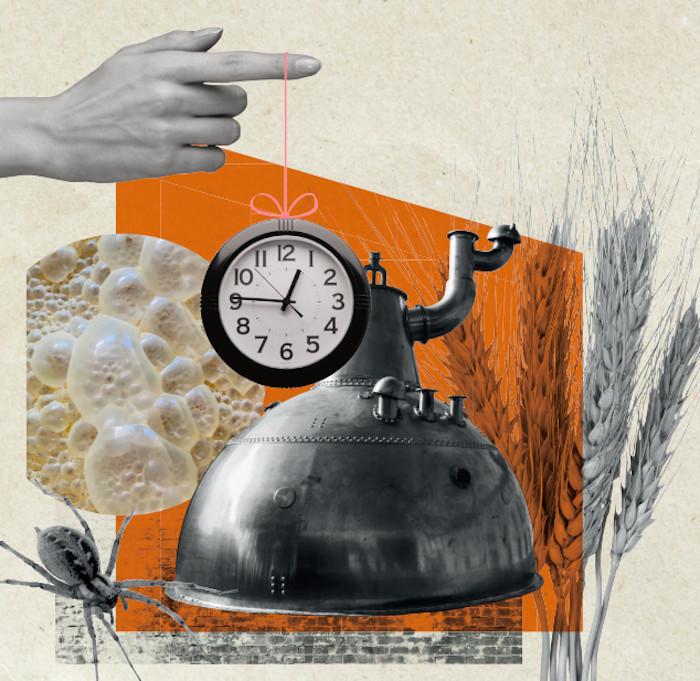
‘Distillery character’ can tell you a lot about how a Scotch whisky has been made. But what does it really mean? Millie Milliken poses the question.
Dirty Chewits, wet rope, TCP: these are just some of the ‘cheat codes’ that Angus Upton, senior whisky specialist, uses to decipher Scotch whiskies when pulling bottles for guests at Braemar’s The Fife Arms. Having had the pleasure of experiencing Upton’s whisky whispering skills at the hotel’s Bertie’s Bar, watching him encyclopaedically select bottles based on my flavour preferences so astoundingly accurately was a real-time example of watching someone so attuned with the profiles of singular distilleries.
That experience has played on my mind as I’ve been increasingly exposed to the notion of ‘distillery character’ on numerous whisky trips around Scotland – and beyond. It’s not a new concept by any means – far from it – but with distilleries and distillers becoming noticeably more audible about theirs, the question begs: what is distillery character? And should bartenders take heed?
First off, it’s worth understanding what is meant by ‘distillery character’ and where said character comes from. Logically, we start with new make spirit: basically, the clear liquid that comes off the still before going into barrel to become whisky. This is where things like raw material (rye, corn, barley and their numerous strains), peat (yay or nay), fermentation times (long, short), mash bills, still type and shape (column, pot), condensers (worm tub, shell and tube), cut points and yeast strains (brewer’s, distiller’s, wild, and more) all play an integral role in defining the characteristics of a certain distillery’s spirit.
While ‘terroir’ remains a contentious term when it comes to whisky, the environment in which a distillery’s whisky is made can have an impact on its character too. Freelance distiller Kyra Elton recalls a story told to her at Womens’+ Whisky Night that evidenced such: “A distillery decided to dust off its cobwebs and spring clean its stills and spaces like never before which, in turn, changed its new make product and overall spirit.” This stuck with Elton during her time distilling at East London Liquor Company. “Obviously consistent cleaning was in place, but I did leave some of our eight-legged friends’ homes in areas that still permitted cleanliness, just in case.”
For Elton, blending is also a space where the evolution of a distillery’s character can happen. “I believe spirit recipes to be in place for consistency and brand recognition. I was trained to understand what those exact qualities were… but I must say, I admired the blending process the most. Distillery character was showcased through the flavours of our new make product then evolved with our cask choices – producing a consistent product with slight perfected tweaks.”
Ageing process
But about the ageing process? For Martyn ‘Simo’ Simpson, co-founder of London’s Dram bar, while incredibly old Scotch whiskies might have lost their character over time, young and NAS (no age statement) whiskies are where distillery character still shines though. With more of these on the market, this notion of distillery character may become more and more pertinent.
And then, to make things even more nuanced, a distillery’s character can also change over time, meaning, depending on recipe changes, the removal or reintroduction of peat, or a change of how stills are fired can all contribute to one distillery having numerous characters over time. For example, in Aberdeenshire, Glen Garioch has reintroduced its floor maltings and direct-fire still to take the brand back to its traditional processes and profile.
Understanding a distillery’s character can be super-handy when it comes to engaging with customers. Upton sees it is a useful operational tool, aka “the simplest and easiest way to ‘stereotype’ or identify a core characteristic that speaks to the distillery”. Examples for him might be lanolin for Glen Scotia, green apple and malic acid for Mannochmore, or young lemon and older lime for Linkwood.
When it comes to training new staff, the team at Bertie’s work with a distillery-first approach before moving on to an impressively granular, bottle-by-bottle level. This allows for a base level of context before diving into distinguishing between things like single cask bottlings: “I think if you are new to the stuff and you smell a Caol Ila, and I explain that all of them smell like bacon on some level, it makes it easier to approach.”
At Dram, liquid always comes before brand and understanding why a whisky tastes a certain way is an important selling tool to make customers leave with a sense that they’ve learned something, says Simpson: “The way we sell whisky to guests is not: ‘Hey guys, do you want a Macallan?’ We ask questions about what flavours they like and knowing a distillery or liquid’s character is the most important thing.”
But while building up a muscle memory for certain distilleries’ distinctive characteristics has its uses, Upton still believes there should be room for interpretation. “Come up with your own notes and opinions. You will sound 100 million times more authoritative with your own reasoning and explanation of flavour than trying to swallow someone else’s. People can tell if you really mean it.”


